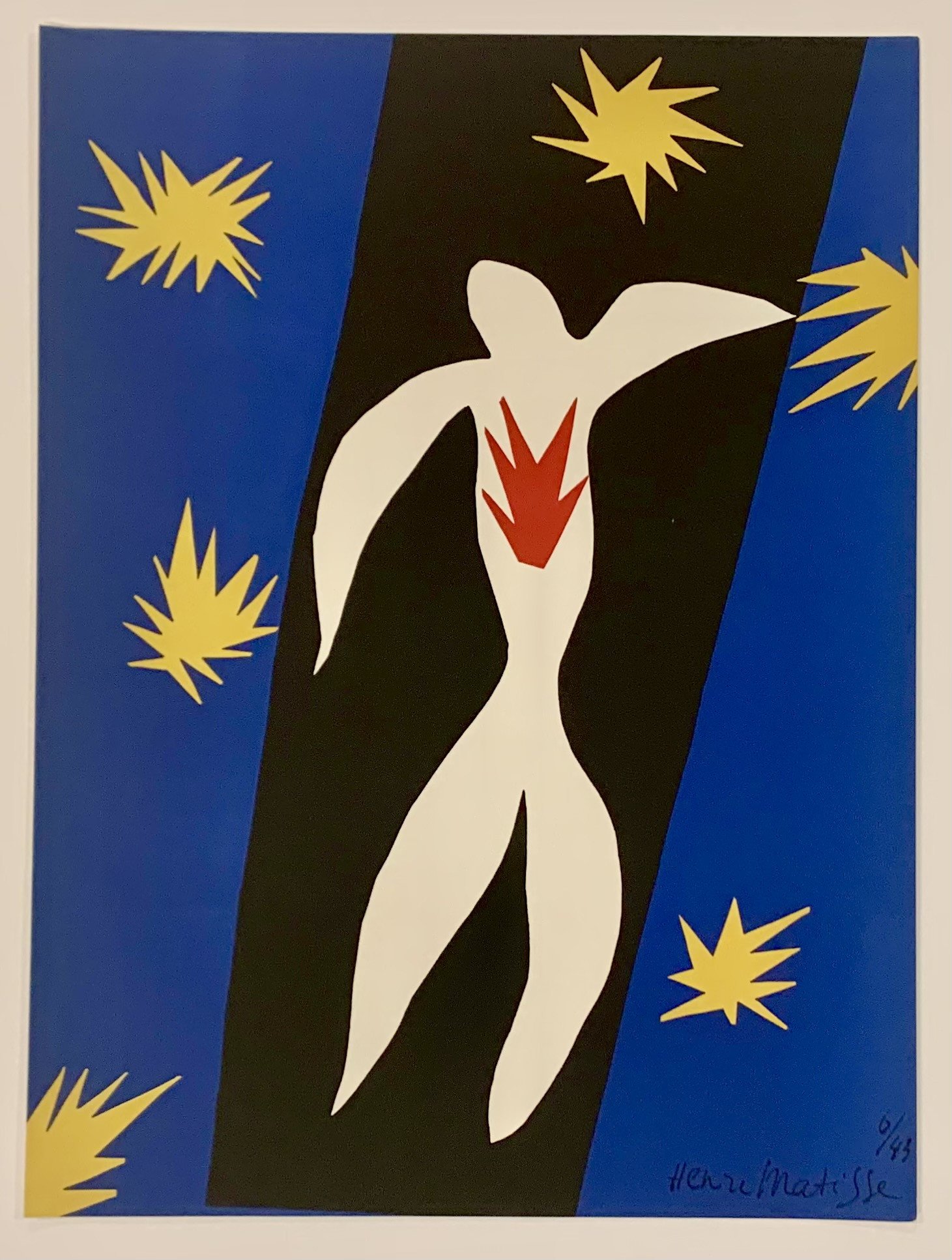Henri Matisse
Henri Matisse was a leading figure of Fauvism and, along with Pablo Picasso, one of the most influential artists of the modern era. In his paintings, sculptures, and works on paper, Matisse experimented with vivid colors, Pointillist techniques, and reduced, flat shapes. “What I dream of is an art of balance, of purity and serenity, devoid of troubling or depressing subject matter,” he once said; his subjects of choice included nudes, dancers, still lifes, and interior scenes. Matisse’s animated brushwork and seemingly arbitrary application of bright colors, as in Woman with a Hat (1905), would prove foundational to Fauvism, while his similarly radical The Red Studio (1911) was a seminal, nearly monochromatic study in perspective. Later in life, physically debilitated, Matisse would turn to making bold, cut-paper collages. He has influenced a wide range of important 20th-century painters, from Hans Hofmann and Milton Avery to Tom Wesselmann and David Hockney.

La Chute d'Icare
1945
Lithograph
13.75 x 10.25 inches (sheet)
Publisher, Teriade, Paris
Printer, Draeger Freres, Paris
Catalogue raisonné, Duthuit 74
Signed in the plate
SOLD

A la Memoire de Angela LaMotte
1945
Lithograph
17 x 15 inches (sheet)
Publisher, Teriade, Paris
Printer, Draeger Freres, Paris
Catalogue raisonné, Duthuit 74
Signed in the plate
SOLD
